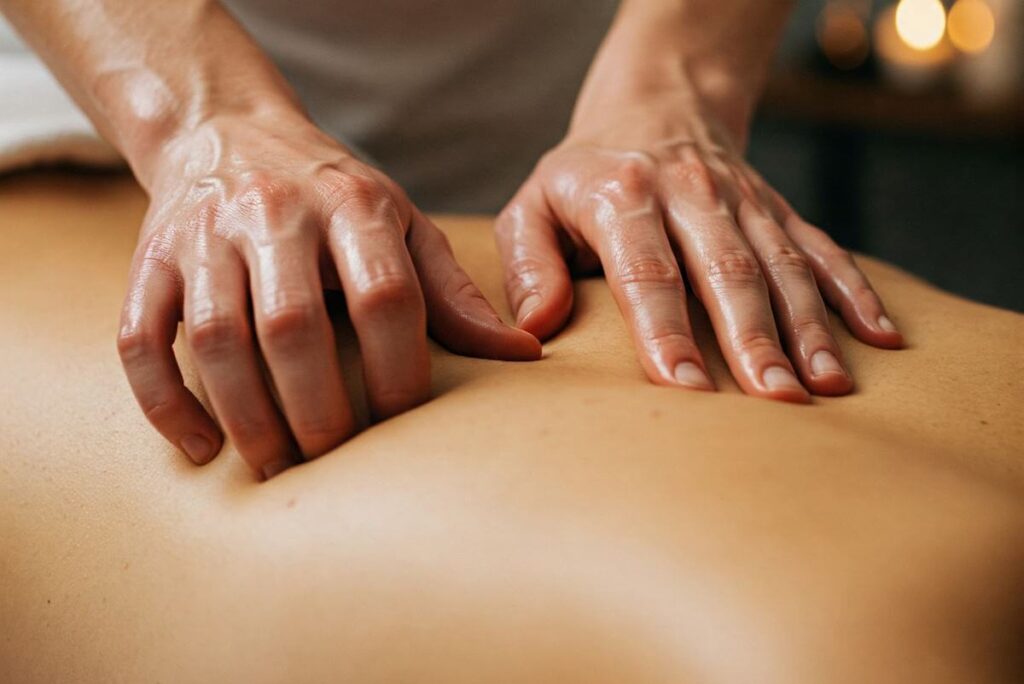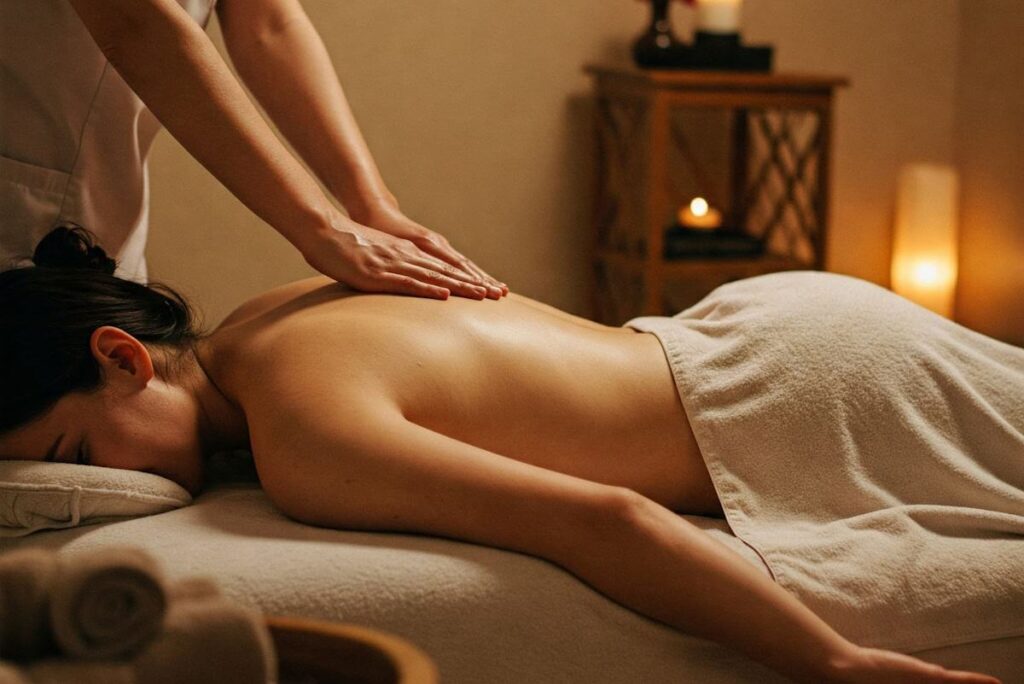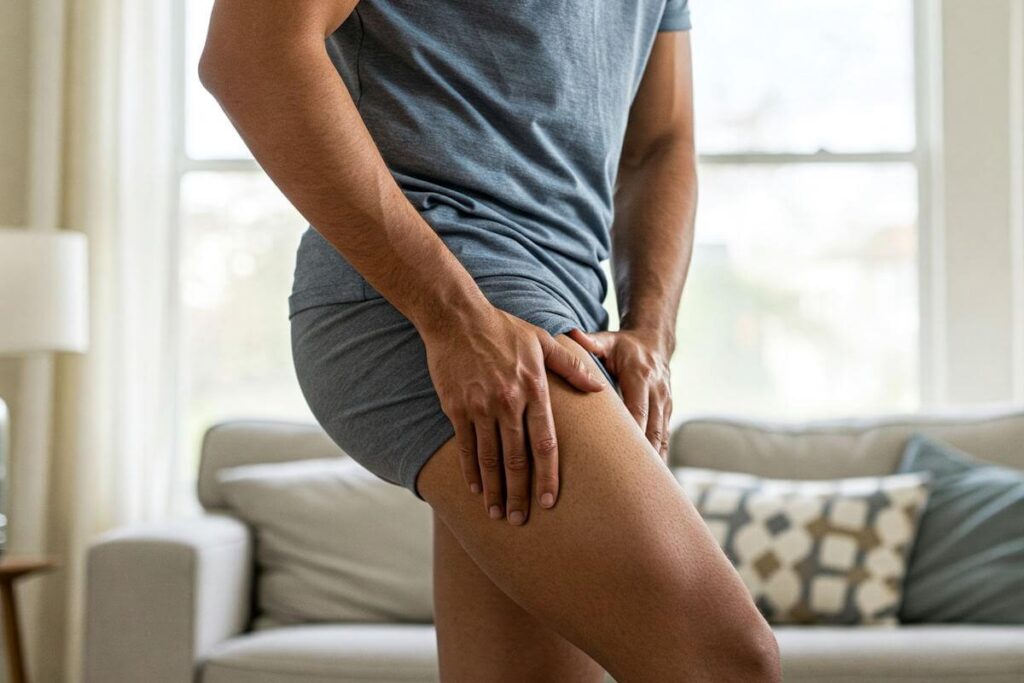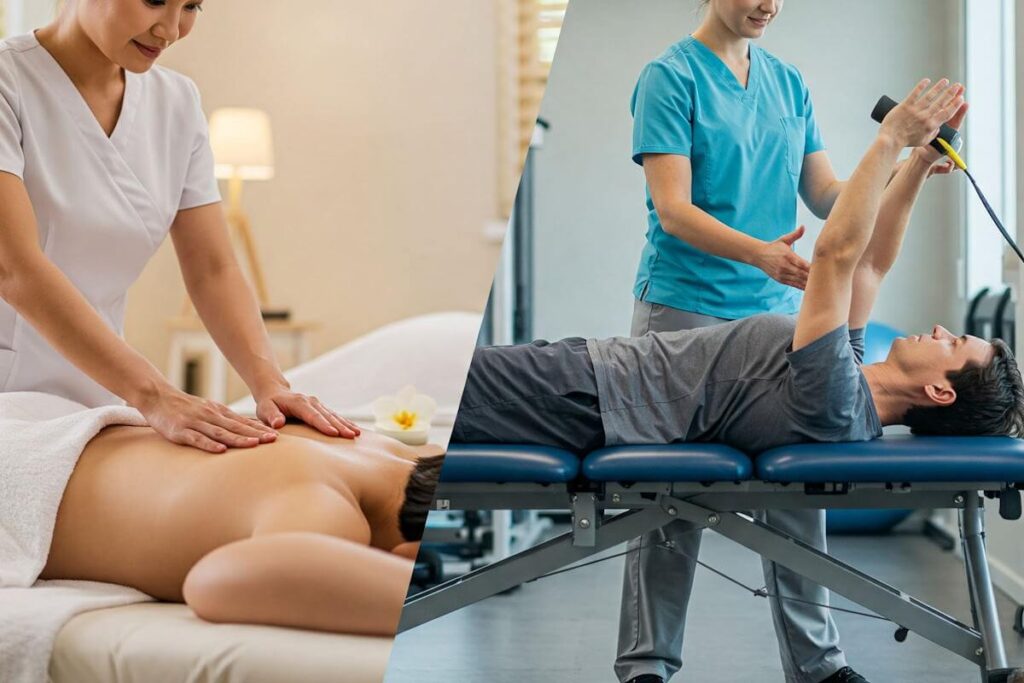Introduction to the Healing Power of Touch
The concept of therapeutic touch has existed for centuries, acting as a cornerstone in various cultures and medicinal practices. From ancient Egypt to traditional Chinese medicine, the application of touch has been understood as a potent tool for promoting healing and well-being. Massage therapy, as one of the most recognized forms of therapeutic touch, incorporates a variety of techniques designed to relieve tension, enhance relaxation, and stimulate physical recovery. The significance of this practice is rooted in the deeper connection it fosters between human beings—a connection crucial not only for social bonding but also for physiological health.
Touch serves as a fundamental form of communication, conveying emotions and intentions that words often fail to express. In both animals and humans, tactile contact is essential in early development stages and forms the basis of social interaction. Infants who receive regular physical contact demonstrate improved emotional regulation and cognitive development. Conversely, a lack of touch can lead to adverse effects including increased anxiety and diminished overall health. This highlights the indispensable role of touch in fostering emotional and physical well-being.
Recent scientific studies have elucidated the mechanisms by which touch impacts the body and mind. Research indicates that massage therapy can decrease levels of cortisol, the stress hormone, while simultaneously boosting the release of oxytocin, often referred to as the “bonding hormone.” Such biochemical changes contribute significantly to improved mental clarity and emotional stability. Furthermore, massage can enhance circulation, reduce muscle tension, and promote restorative sleep, resulting in a holistic approach to health. As society continues to recognize the value of touch, both in personal and therapeutic contexts, the field of massage therapy is experiencing a resurgence as a vital component of comprehensive healthcare strategies.
The Physiological Effects of Massage
Massage therapy has a profound impact on the body, triggering a variety of physiological responses that promote healing and overall well-being. One of the primary effects of massage is the enhancement of blood circulation. When pressure is applied to specific areas of the body, it compresses the blood vessels, which can stimulate blood flow once the pressure is released. This increased circulation ensures that oxygen and essential nutrients are delivered to tissues effectively, facilitating cellular repair and promoting healing processes.
Moreover, massage is known to stimulate the release of endorphins, the body’s natural painkillers. These neurochemicals not only help to alleviate physical discomfort but also contribute to a sense of relaxation and emotional well-being. The boost in endorphin levels can be particularly beneficial for individuals experiencing chronic pain or heightened stress, as they help mitigate the perception of pain and enhance mood.
Additionally, massage has significant effects on muscle tension and tightness. By applying varying pressure to muscles and soft tissues, massage can break down muscle knots and adhesions, leading to enhanced flexibility and improved range of motion. This process reduces the tension in muscles, which can often be a source of pain and discomfort. As a result, patients who regularly receive massage therapy frequently report decreased muscle tightness and improved physical function.
Lastly, the physiological benefits of touch extend beyond just the immediate sensation of relaxation. Research indicates that regular massage can lower cortisol levels, helping to reduce stress and anxiety. The cumulative effects of these physiological responses make massage not only a luxurious indulgence but a critical component in maintaining both physical and mental health. The science underlying these benefits illustrates how integral touch is in healing the body and mind.
The Psychological Benefits of Massage
Massage therapy is often acknowledged for its physical benefits, yet its psychological advantages are equally profound. Research has shown that receiving a massage can significantly reduce levels of stress and anxiety, which in turn contributes to enhanced mental well-being. One of the critical mechanisms behind this effect lies in the stimulation of the body’s relaxation response. As practitioners work on tense muscles, the body naturally releases tension, leading to a decrease in cortisol, the hormone associated with stress. Concurrently, levels of serotonin and dopamine, neurotransmitters that promote feelings of happiness and contentment, are elevated.
Studies conducted within the field of psychology indicate that individuals who engage regularly in massage therapy report lower anxiety levels and improved mood states. A notable study published in the Journal of Clinical Psychiatry found that participants who received routine massages exhibited a significant reduction in anxiety symptoms compared to those who did not. Furthermore, these individuals often experienced improved quality of life, marked by increased emotional resilience and a broader capacity to cope with daily stressors.
Additionally, massage therapy facilitates an enhanced sense of connection and self-awareness. This physical touch allows for an experience of mindfulness, drawing attention away from daily stressors and into the present moment. The calming effect can lead to an improved state of mind, fostering greater emotional balance. In a world where the pace of life often leads to feelings of isolation, the therapeutic touch of massage instills a sense of support and well-being, providing individuals an opportunity to reconnect with their bodies and emotions.
Overall, the psychological benefits of massage therapy extend far beyond relaxation. They encompass a holistic improvement in mental health, underscoring the importance of integrating such therapies into one’s self-care routines for enhanced psychological resilience and emotional stability.
Types of Massage and Their Specific Benefits
Massage therapy encompasses a variety of techniques, each tailored to meet diverse physical and emotional needs. Understanding the unique benefits of each type can help individuals choose the most suitable approach for their specific circumstances.
Swedish massage is one of the most popular forms of massage, characterized by gentle pressure and long, flowing strokes. This technique primarily aims to promote relaxation, reduce tension, and alleviate muscle soreness. The rhythmic movements enhance circulation, which can aid in recovery after physical activity. Furthermore, the calming effects of Swedish massage can significantly contribute to stress relief and improved mental clarity.
In contrast, deep tissue massage focuses on the deeper layers of muscle and connective tissue. It employs more intense pressure to target chronic pain and tension, often associated with issues such as sports injuries or postural imbalances. This therapeutic technique is known for aiding in relief from muscle knots and improving mobility. Individuals seeking to address ongoing discomfort may find deep tissue massage particularly beneficial.
Aromatherapy massage adds another layer of relaxation by incorporating essential oils into the treatment. The combination of soothing scents and physical touch can enhance emotional well-being, reduce anxiety, and improve sleep quality. Different essential oils are known for specific benefits; for instance, lavender promotes relaxation, while eucalyptus is invigorating. This type of massage addresses both the physical and emotional aspects, making it an appealing option for those seeking holistic healing.
Other notable types include sports massage, which is designed for athletes to prepare for and recover from sporting events, and prenatal massage, which is tailored for the unique needs of pregnant individuals. Each massage modality holds distinct advantages, allowing individuals to choose one that aligns with their personal wellness objectives and requirements.
The Role of Massage in Rehabilitation and Physical Therapy
Massage therapy plays a significant role in rehabilitation settings, particularly when it comes to injury recovery and chronic pain management. The physical benefits of massage are well-documented, and they extend beyond mere relaxation; they encompass a variety of therapeutic effects that are crucial for recovery. The application of massage can aid in reducing muscle tension, enhancing circulation, and promoting an overall sense of well-being, all of which are essential for people undergoing rehabilitation.
Injury recovery often requires a multi-faceted approach, and massage therapy can complement other rehabilitation techniques effectively. For instance, studies have shown that incorporating massage into a physical therapy regimen can facilitate faster healing by addressing both soft tissue recovery and pain modulation. Massage techniques such as deep tissue and myofascial release help in releasing knots and adhesions in the muscles, allowing patients to regain strength and flexibility more efficiently. This is particularly effective for sports injuries and conditions where mobility is compromised.
Chronic pain management is another domain where massage therapy proves beneficial. Conditions such as fibromyalgia and lower back pain often result in muscle tightness and fatigue. By regularly integrating massage therapy into treatment protocols, healthcare providers have noted a decrease in pain perception among their patients. Expert opinions suggest that the manual manipulation involved in massage stimulates the body’s natural healing processes, contributing to long-term relief from chronic pain. Physical therapists often advocate for this approach, providing case studies that highlight improved patient outcomes when massage therapy is included in treatment plans.
Overall, research underscores the efficacy of massage therapy in rehabilitation and physical therapy settings. The positive impact of touch not only enhances physical healing but can also improve mental well-being, creating a holistic approach to patient care that many practitioners are increasingly adopting.
Scientific Research and Evidence Supporting Massage Therapy
Recent scientific research has increasingly illuminated the multifaceted benefits of massage therapy, establishing a robust foundation for its use in both clinical environments and daily life. Numerous studies have documented the physiological and psychological advantages that arise from various massage techniques, illustrating how this form of bodywork can significantly enhance overall health and well-being.
One noteworthy study published in the journal “Pain” examined the effects of massage therapy on patients suffering from chronic pain conditions. The findings revealed that regular massage sessions contributed to measurable reductions in pain intensity and improved functionality, highlighting massage therapy as an effective adjunct treatment for managing chronic pain. Furthermore, a meta-analysis in the “Journal of Clinical Psychology” showcased the efficacy of massage in alleviating anxiety and depression symptoms, providing evidence that touch can be a powerful tool in psychological healing.
Moreover, research has demonstrated how massage positively affects the immune system. A study featured in the “Journal of Alternative and Complementary Medicine” indicated that individuals who received massages exhibited increased levels of lymphocytes, a type of white blood cell essential for immune response. This strengthens the argument for integrating massage therapy into holistic health practices, particularly for those aiming to bolster their immunity.
Beyond these health benefits, the psychological effects of massage therapy cannot be overlooked. Studies have indicated that regular massage can lead to decreased levels of the stress hormone cortisol, enhancing overall relaxation and emotional health. The implications of such research extend into everyday life, suggesting that even occasional massage therapy can foster improved mental clarity and emotional resilience.
As the body of evidence supporting massage therapy continues to expand, it is clear that ongoing research is crucial. The potential benefits of touch-based therapies mandate further exploration, ensuring that both practitioners and patients can make informed decisions based on rigorous scientific findings. This evolving field remains one of the most promising areas in complementary and alternative medicine.
Cultural Perspectives on Massage and Healing Touch
Throughout history, massage and healing touch have held significant roles in various cultures, serving as essential components of wellness and healing practices. In many Eastern traditions, such as Traditional Chinese Medicine (TCM), massage techniques like Tui Na are often integrated with acupuncture and herbal medicine. This holistic approach emphasizes the importance of energy flow, or ‘Qi,’ which is believed to be crucial for maintaining physical and emotional balance. Such practices demonstrate a profound understanding of the body’s interconnectivity, aligning closely with contemporary scientific findings that highlight the benefits of touch in alleviating stress and promoting healing.
In India, the ancient practice of Ayurvedic medicine employs Abhyanga, a specific form of Ayurvedic massage that utilizes warm oils to rejuvenate the body and mind. This therapy is not only about physical healing but also involves spiritual elements, thus showing how healing touch is often intertwined with broader cultural beliefs. The scientific inquiry into the effectiveness of such methods is increasingly revealing how these age-old practices can correlate with modern concepts of muscle relaxation and improved circulation.
Furthermore, in the indigenous cultures of North America, massage and healing through touch are seen as communal practices that foster emotional and spiritual well-being. Ritualistic ceremonies often incorporate touch as a means of connecting with others and promoting collective health. This perspective resonates with the modern understanding of social support and its impact on mental health. Such cultural views on massage reinforce the notion that healing touch is not solely a physical remedy; it encompasses emotional and social dimensions as well.
By examining these varied cultural perspectives, we gain insight into how massage transcends mere technique, acting as a vital instrument for holistic healing. The convergence of these traditional practices with scientific validation underscores the enduring significance of touch in promoting well-being across different societies.
Incorporating Massage into Your Wellness Routine
Incorporating massage into your wellness routine can significantly enhance both physical and mental health. The key to a successful integration is to approach it systematically, ensuring that it fits seamlessly into your lifestyle. First and foremost, it is crucial to find a qualified massage therapist. Look for professionals with relevant certifications and a good reputation, as their expertise will provide you with an optimal experience. You can explore online reviews, or seek recommendations from trusted friends or healthcare providers. A qualified therapist can tailor the massage treatment to suit your individual needs, addressing specific concerns such as stress relief or muscle tension.
Self-massage techniques are another effective way to incorporate massage into your wellness regimen. Learning basic self-massage skills can empower you to provide your body with relief whenever needed. Techniques may include using your hands, a foam roller, or massage balls to apply pressure on sore areas. Focus on key muscle groups, such as the neck, shoulders, and lower back, to alleviate discomfort. Online tutorials or instructional videos can serve as excellent resources for learning these techniques and ensuring you perform them correctly.
Setting aside dedicated time for relaxation is essential in making massage a regular aspect of your wellness routine. Whether it’s scheduling weekly appointments with a therapist or committing to self-massage sessions at home, consistency is vital. Plan specific times in your calendar for these practices, treating them as appointments for your well-being. To create an inviting atmosphere, consider enhancing your environment with calming music, scented candles, or therapeutic essential oils. This ambiance not only prepares you for relaxation but also heightens the restorative effects of massage, promoting a sense of tranquility and balance in your life.
Conclusion: Embracing the Power of Touch for Health and Well-being
Throughout this exploration of massage therapy, we have observed its profound effects on both physical and mental health. The intricate relationship between touch and well-being is supported by a wealth of evidence, highlighting how human interaction plays a critical role in fostering health. Research indicates that massage therapy can alleviate physical ailments, such as muscle tension and chronic pain, while also serving as an effective remedy for stress and anxiety.
The physiological benefits of massage are rooted in its ability to promote circulation, reduce muscle stiffness, and enhance lymphatic drainage. Such improvements in the body’s systems not only facilitate faster recovery from physical exertion but also contribute positively to overall vitality. Furthermore, the psychological advantages of receiving a massage cannot be overstated. The calming effects of touch contribute to the release of endorphins and oxytocin, hormones associated with relaxation and emotional well-being. These elements underscore massage therapy’s significance as a holistic approach to enhancing health.
In a fast-paced world often defined by stress and disconnection, massage therapy offers an opportunity to reconnect with oneself and promote a sense of tranquility. Recognizing the importance of incorporating massage as part of a comprehensive self-care routine can lead to lasting improvements in well-being. As we reflect on the valuable insights shared, it becomes apparent that massage therapy is not merely a luxury but an essential tool for maintaining both physical health and mental equilibrium. By embracing the power of touch, we not only nurture our bodies but also cultivate a deeper understanding of our own needs for relaxation and healing.




